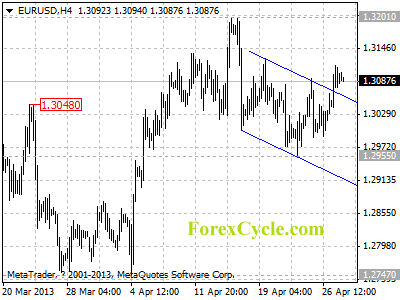London Gold Market Report
from Ben Traynor
BullionVault
Tuesday 30 April 2013, 07:15 EDT
FOLLOWING a dip during Asian trading, the gold price climbed back above $1470 per ounce Tuesday morning in London, broadly in line with where it was a day earlier, with China’s markets shut for this week’s Labor Day holiday.
Silver ended the morning in London around $24.40 an ounce, also little-changed from a day earlier, while other commodities and stock markets failed to hold onto gains from earlier in the day, while US Treasuries gained.
“Gold’s recovery appears to be faltering somewhat,” says this morning’s commodities note from Commerzbank.
“From a technical point of view,” adds ANZ head of global markets research Asia Tim Riddell, “although the rebound has been relatively solid, it appears to be a more sustained correction of the fall that we saw from late March, rather than a turn in trend. Really what we need to see is a series of closes above$1505 to take the pressure off.”
By Tuesday lunchtime in London gold looked set to record its biggest monthly loss in Dollar terms since December 2011, down nearly 8%, based on London Fix prices.
In Euro terms gold was headed for a 9.5% loss, the biggest since July 2010. In Sterling gold was down 9.6%, also the biggest monthly loss since July 2010, although an afternoon fix at £951 an ounce or below would make for the biggest monthly drop since October 1990.
Gold’s sharp price drop earlier this month “broke below the $300 range which prevailed from the highs in July 2011,” says technical analysts at Societe Generale.
“This confirmed a major double top which projects a target at $1265…the indicators are toppish and call for vigilance.”
Elsewhere at that bank however another SocGen strategist repeated a case for a $10,000 gold price last week.
Since the low of $1322 an ounce touched on April 16, gold has rallied more than 10% as the lower gold price has been met by strong demand for physical gold in many parts of the world, especially in the form of smaller bars, although “physical buying has slowed down” according to one Hong Kong dealer speaking to newswire Reuters Tuesday.
“The problem in the market is the tight physical supply,” the dealer said. “It will take time to refine the metal.”
“We are producing 24 hours a day,” says Frederic Panizzutti, global head of marketing and sales at Swiss bullion refiner MKS.
“[Strong demand for physical bullion] is all across the globe…the fact that premiums are so high, it means that no one is making enough.”
The US Mint meantime has sold 312,500 of American Eagle bullion gold coins so far this month, the biggest monthly total since June 2010.
By contrast, gold exchange traded funds tracked by Bloomberg continued to see outflows throughout April, losing 168.2 tonnes, the biggest monthly drop on record. By comparison, Barclays reported at the start of the month that gold ETFs saw outflows of around 154 tonnes for the whole of the first quarter of the year.
Of these, the world’s biggest gold exchange traded fund SPDR Gold Trust (GLD) has seen its holdings fall 11.5% this month to 1080 tonnes, the lowest since September 2009.
The recovery in the gold price has also been due to “the combined impact of a weaker Dollar and on market chatter that the Federal Open Market Committee meeting this week and the European Central Bank policy meeting will confirm ongoing monetary easing in the United States and Europe,” says a note from HSBC.
The note adds that HSBC’s currency analysts see diminishing expectations that the Fed will announce an early end to its ongoing quantitative easing asset purchases.
The FOMC begins its latest policy meeting today ahead of a decision tomorrow, while the ECB is due to make its latest policy announcement Thursday.
German unemployment rose by 4,000 this month, figures published Tuesday show, twice the consensus forecast among analysts, although the seasonally adjusted unemployment rate remained steady at 6.9%.
For the Eurozone as a whole meantime the unemployment rate ticked higher to 12.1% last month.
Elsewhere in Europe, Italy’s new prime minister Enrico Letta told parliament Monday that the country “will be lost” unless it adopts policies aimed at stimulating economic growth.
Gold value calculator | Buy gold online at live prices
Editor of Gold News, the analysis and investment research site from world-leading gold ownership service BullionVault, Ben Traynor was formerly editor of the Fleet Street Letter, the UK’s longest-running investment letter. A Cambridge economics graduate, he is a professional writer and editor with a specialist interest in monetary economics. Ben can be found on Google+
(c) BullionVault 2013
Please Note: This article is to inform your thinking, not lead it. Only you can decide the best place for your money, and any decision you make will put your money at risk. Information or data included here may have already been overtaken by events – and must be verified elsewhere – should you choose to act on it.


